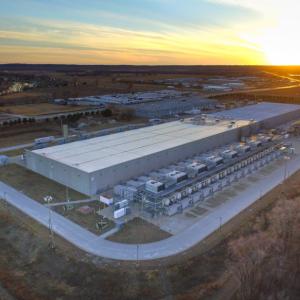An H5N1 pandemic is inevitable — here’s why.
The current H5N1 influenza outbreaks affecting dairy cattle in the United States were both predictable and avoidable. Let’s take a look at why that is the case and why a new pandemic is on our horizon in the not-so-distant future.
There have been no documented cases of H5N1 in Canadian dairy cattle, and as of this writing, no viral fragments have been detected in our commercial milk supply. Relative to the U.S., Canada has more stringent policies regarding the legality of providing poultry litter as feed for lactating dairy cattle. Poultry litter composting practices include meeting temperature and duration standards, and we have stricter rules surrounding imported dairy cattle inspection and testing.
In particular, I want to highlight three uniquely American practices that stand out:
- California is the only known state that effectively enforces a ban on the practice of feeding poultry litter to lactating dairy cattle. Circumstances worsen when that poultry litter is a vector for H5N1.
- American waterways have been severely impacted by decades of poultry litter and other farm related wastewater pollution. This is evident via related algae blooms and higher E. coli readings relative to other jurisdictions.
- State-sanctioned non-compliance with federal environmental regulations have allowed bad corporate actors in US agriculture to capture the governance of that industry. This practice persists without recourse in multiple states.
Let’s examine these points one by one.
1) California is the only known state that publicly bans the feeding of poultry litter to lactating dairy cattle.
Despite having H5N1 poultry outbreaks dating back to Sept 2022—Apr 2023 and again from Nov 2023—Jan 2024, no H5N1 dairy cattle cases have been recorded in the state.
The H5N1 Eurasian lineage currently affecting North, Central, and South American continents has been around since 2021. Due to recombination events with other avian species, this strain is particularly more virulent. US states currently experiencing outbreaks in bovine populations (Colorado, Idaho, Iowa, Kansas, Michigan, Minnesota, New Mexico, North Carolina, Ohio, Oklahoma, South Dakota, Texas, and Wyoming) allow for the feeding of poultry litter to dairy cattle. Does this mean infected poultry litter is the direct cause of H5N1’s species-jump into dairy cattle? Not exactly. Let’s move to point 2.
2) American waterways have been severely impacted by decades of poultry litter pollution, and more recently the dumping of H5N1-infected milk across multiple states.
Wastewater surveillance is an amazing tool for tracking prevalence of infectious diseases within the human population. A perfect example has been its effectiveness throughout the COVID-19 pandemic. Wastewater surveillance for H5N1 is only able to track to the H5 level, meaning H5N1, H5N2, H5N7 et cetera all get lumped together. What’s very important to note here, is that with Big Ag dumping millions of pounds of infected poultry litter into waterways, wastewater sampling generates misleading false positives (positive for livestock but negative for humans).
Positive wastewater results have also occurred in areas where no H5N1 dairy cattle cases have been recorded (like San Francisco and Austin). This suggests that dumping practices are severely impacting the capabilities of wastewater testing to identify and differentiate between animal and human viral spread. Wastewater monitoring results are thus compromised, as the source of high levels of pathogen is actually coming from infected poultry litter and/or infected raw milk, rather than from humans.
The dumping of H5N1-infected poultry litter also propagates viral spread through the contamination of multiple waterways. This contamination affects lakes, rivers, and tributaries, possibly resulting in viral spread to animal populations through water consumption, across large distances.
This is of greater concern because viral transmission can occur in multiple species in multiple locations. Once again raising the obvious question, does this mean that infected poultry litter is the direct cause of the H5N1 dairy cattle outbreaks? Not exactly. Let’s examine one more angle.
3) State-sanctioned non-compliance with federal environmental regulations protect corporations allowing for and legalizing the continued dumping of millions of pounds of contaminated poultry litter and raw milk into waterways. This practice has persisted in multiple states, without recourse, for decades.
With today’s heightened prevalence of infectious diseases, an H5N1 outbreak on one poultry farm can impact a variety of bird and mammal species throughout the country causing widespread and uncontrolled transmission. There is seemingly no willingness to apply any corporate accountability or appropriate consequence for the undue risk to both human and animal health resulting from unimpeded dumping practices. Without accountability, corporations will not change their behaviour, and the practice will continue unabated into the future.
Does this mean the unregulated dumping of H5N1-infected poultry litter and raw milk is the direct cause of the H5N1 dairy cattle outbreak?
Not exactly.
The interstate transport of dairy cattle, originating in Texas, has been genetically linked to H5N1-infected dairy cattle cases in states in receipt of those cattle. Intra-state transmission of H5N1 has spread into neighbouring areas of where the original infected cattle were transported. This matters.
According to the FDA, widespread transmission of the virus among humans should not be possible due to the inviability of receptors. Cumulatively, there have only been ten confirmed human cases of H5N1 in the US, and while half of these have been identified within the past week, we have not yet seen a widespread human outbreak as we have with COVID. It’s therefore unlikely that people are unknowingly transmitting the virus to dairy cattle in these intrastate transmission cases.
The USDA issued a report in late June 2024 for the state of Michigan, highlighting the potential involvement of business operations (personal movements, etc.) and their role in the intrastate spread of H5N1. The summary indicates that 100% of state dairy farms both received feed deliveries and that feed was available to be accessed by multiple avian and mammalian species.
Why is this important? Because infected feed may actually be a key factor behind the intrastate spread of H5N1. However—and this is key—genetic sequencing indicates that the new strain of H5N1 that’s infecting dairy cattle (clade B3.13) was found in both animal and avian species.
Some questions. If cattle feed was the source of the outbreaks, why would only lactating dairy cattle be affected? Also, why would other animals who consumed the same feed be infected with new dairy cattle H5N1 strains? The infected feed itself did not contain genetic information from dairy cattle reassortment events. Lastly, if fertilizer or compost were the main driver of intrastate H5N1 transmission, how could animals and birds contract H5N1 with genomic signatures specific to the strain circulating among dairy cows?
We are left with two plausible conclusions:
1) Animal and avian species are contracting the virus (with dairy cattle genetic signatures) through contact with H5N1-infected raw milk which has been dumped either on farms or in waterways near infected dairy farms. H5N1 in cats is a notable and ominous signal.
2) Infected dairy cattle (via intrastate transport) are contaminating on-farm water sources which in turn are available for consumption by other farm animals, birds, and wildlife.
Though perhaps lengthy, this has by no means been an exhaustive analysis of key factors contributing to unmitigated H5N1 spread within the US. However, at this time, four key steps can be taken to effectively remedy the situation:
– Ban the feeding of poultry litter to lactating dairy cattle in all states.
– Disallow the dumping of untreated poultry litter and waste milk into American waterways and its use as a fertilizer for pasture and/or crops.
– Change the laws surrounding immunity in reference to allowing corporations to freely dump raw waste into American waterways. If corporate responsibility is not observed, sufficiently punitive fines for illegal dumping must be levied.
– The continued dominance of a symptom-focused disease model must be challenged, and priorities must shift now to prevention and viral annihilation.
There are many reasons, as discussed above, as to why an H5N1 pandemic is inevitable. The United States will need to address the behaviour of multiple players, and soon, in order to give the world time to prepare, and avert the next pandemic from starting in its own backyard.
Marcel Dufour is Chief Research Analyst at Boomslang Analytics Inc.









